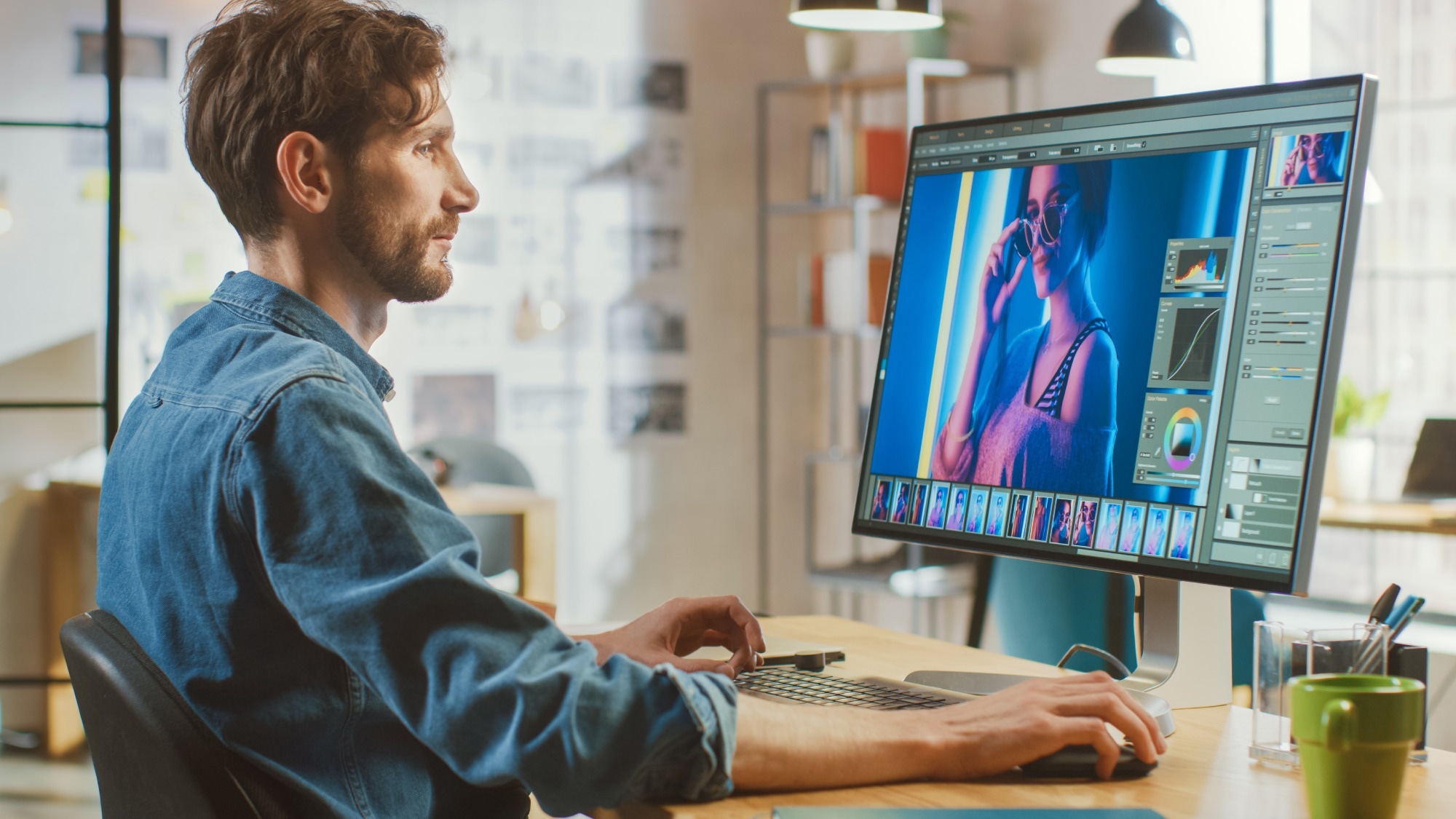In an article recently posted to the Meta Research website, researchers introduced SceneDiffusion, a novel approach enabling flexible image layout rearrangement using diffusion models. Unlike previous methods limited by fixed processes, SceneDiffusion optimizes layered scene representations dynamically during sampling. It achieves spatial disentanglement by denoising scene renderings across various layouts and supporting operations like moving resizing cloning and object appearance editing. Notably, this approach requires no training, works with text-to-image diffusion models, and operates swiftly, even on diverse, real-world images.
 Study: Flexible Image Editing with SceneDiffusion. Image Credit: Gorodenkoff /Shutterstock
Study: Flexible Image Editing with SceneDiffusion. Image Credit: Gorodenkoff /Shutterstock
Related Work
Recent advances in generative modeling have focused on controllable scene generation within generative adversarial networks (GANs), emphasizing spatially disentangled latent spaces for tasks like image and video synthesis. However, adapting these methods to diffusion models is challenging due to their fixed forward process, limiting their ability to learn flexible, spatially disentangled representations. Recent efforts have explored enabling diffusion models to generate images based on predefined layouts but have not prioritized spatial disentanglement or consistent content preservation after layout manipulation.
SceneDiffusion Framework Overview
The approach outlines a comprehensive framework for controllable scene generation and spatial editing using SceneDiffusion. Diffusion models learn to generate data by progressively adding Gaussian noise to input images, creating a Markov Chain of latent variables that culminates in a standard Gaussian distribution. A denoiser is trained to reverse this noise addition, enabling image generation from random noise at inference.
In the next part, the focus shifts to achieving spatially disentangled layered scenes using SceneDiffusion. A layered scene representation is proposed, where scenes are decomposed into ordered layers, each characterized by object-centric masks, spatial offsets, and feature maps. This structured approach allows intuitive control over object placement and appearance while maintaining fidelity to image content. A novel sampling strategy and rendering process is introduced using α-blending to composite layers into coherent images.
SceneDiffusion is a detailed method to optimize feature maps within layered scenes. Sampling multiple layouts and denoising each independently enhances spatial editing capabilities without compromising computational efficiency. The process involves rendering views from varied layouts, estimating noise using locally conditioned diffusion, and updating feature maps to align with denoised views through a sequential optimization process.
Furthermore, SceneDiffusion's applicability to image editing tasks is extended, demonstrating its ability to manipulate existing images by conditioning on reference images. It enables dynamic layout changes while preserving the visual coherence and fidelity of the original scene. By leveraging anchor views and Gaussian noise, feature maps are iteratively adjusted to align with desired layout changes, ensuring high-quality output across different editing scenarios.
Experimental Evaluation Summary
Experiments in this study encompass both qualitative and quantitative evaluations of the approach. Quantitatively, the method is assessed using a dataset tailored for single-object scenes due to the complexity of semantically meaningful spatial editing in multi-object scenarios. This dataset includes 5,092 high-quality images with associated captions and automatically annotated object masks.
Evaluation metrics such as mask intersection over union (IoU), consistency, visual consistency, learned perceptual image patch similarity (LPIPS), and structural similarity index measure (SSIM) gauge the effectiveness of the controllable scene generation. Specifically, mask IoU measures alignment between target layouts and generated images, while other metrics assess consistency and perceptual quality.
Object masks are randomly positioned for controllable scene generation to create diverse target layouts. The approach generates images conditioned on these layouts and local prompts, ensuring content consistency across different configurations. Comparisons with multidiffusion highlight superior performance across all metrics, demonstrating the method's efficacy in maintaining image fidelity and coherence through various manipulations.
In object-moving tasks for image editing, the goal is to relocate objects while preserving overall scene coherence. It involves generating images where specified objects have shifted to new positions within predefined constraints to prevent them from moving out of frame. Performance comparisons with inpainting-based approaches underscore the advantages of achieving higher fidelity and perceptual quality.
Additionally, layer appearance editing results, including object restyling and replacement, highlight the method's ability to modify specific elements while maintaining natural scene composition. These capabilities are illustrated through qualitative evaluations and supported by quantitative analyses across different manipulation scenarios.
Moreover, the team conducted extensive ablation analysis to dissect the method's components and their impact on metrics like mask IoU and consistency. This approach validated the method's robustness, offering insights for optimizing controllable scene generation and spatial editing to balance efficiency with fidelity in complex visual scene manipulation.
Conclusion
In summary, SceneDiffusion introduced a method for achieving controllable scene generation using image diffusion models. It optimized a layered scene representation, allowing spatial and appearance information to be disentangled for extensive editing operations. By leveraging sampling trajectories from reference images, objects were effectively moved within diverse scenes.
Although it achieved superior generation quality, cross-layout consistency, and operational speed compared to baselines, limitations included potential mismatches between object appearances and masks and high memory requirements for simultaneous layout denoising, which restricted usability in resource-constrained scenarios.